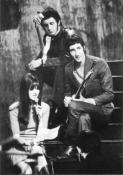
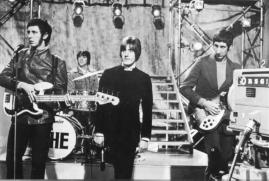


|

|
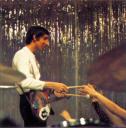
|
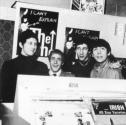
|
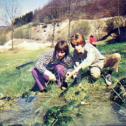
|
Within six months of the release of the solitary High Numbers single "Zoot Suit" / "I'm the Face", not only had Pete, Roger, John and Keith changed their trading name, but also their entire musical approach.
Aurally, this was partly down to the fact that both Townshend and Entwistle now favoured the Rickenbacker range of guitars and the same primitive "Louie Louie"-style riff that another seminal Brit-Rock foursome, The Kinks had found great success with on "You Really Got Me". Furthermore, The Who then shared the same record producer as The Kinks: American expatriate Shel Talmy.
Perhaps the most important contributing factor was Kit Lambert. Much of The Who's initial and controversial success was built
around the sheer ferocity of their visual impact and the volume with which they presented it: once seen/heard - never forgotten. And, from the moment, when Lambert and Stamp took over creative management, the former never once let The Who forget this crucial requisite.
At the time, the most important television programme in Britain for launching an artist's career was "Ready, Steady, Go!" - a programme that not only prided itself with being in sync, but first with the very latest fads. It was only natural that the producers promptly booked The Who to plug their first single.
As it transpired, Lambert discovered that the one person responsible for assembling the weekly studio audience was ill, and so Lambert kindly volunteered to supply a ready-made crowd of typical teens.
What the RSG producers didn't know was that Lambert had herded together the entire audience from The Goldhawk Social Club in Shepherds Bush and that each one was both bona fide Mod and die-hard Who fan.
That night, the other acts on the show really didn't stand a chance. But The Who and, in particular their audience, were sensational.
In just under three action-packed minutes, The Mod movement had
spread the word right across the British Isles, and
the word was The Who.
